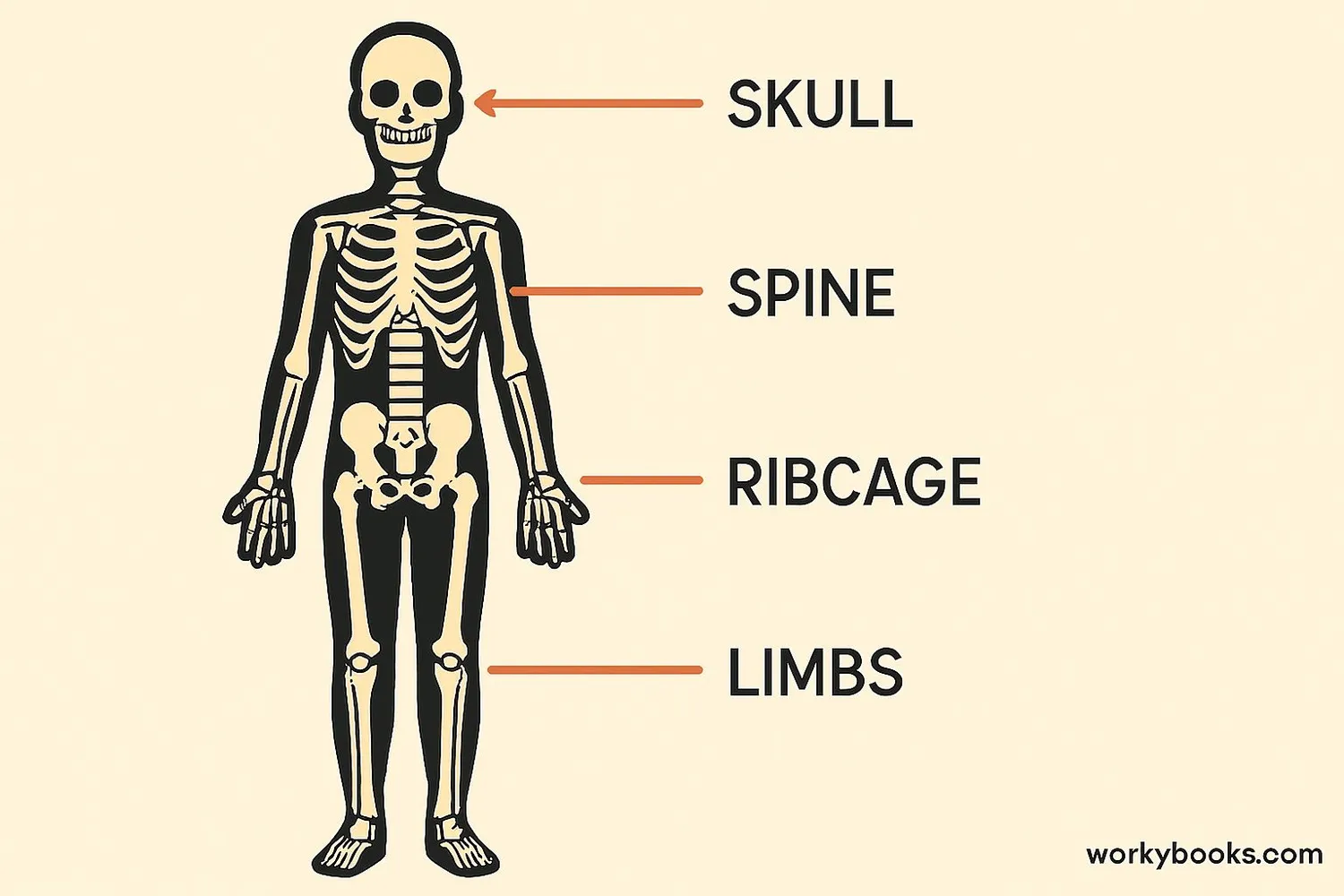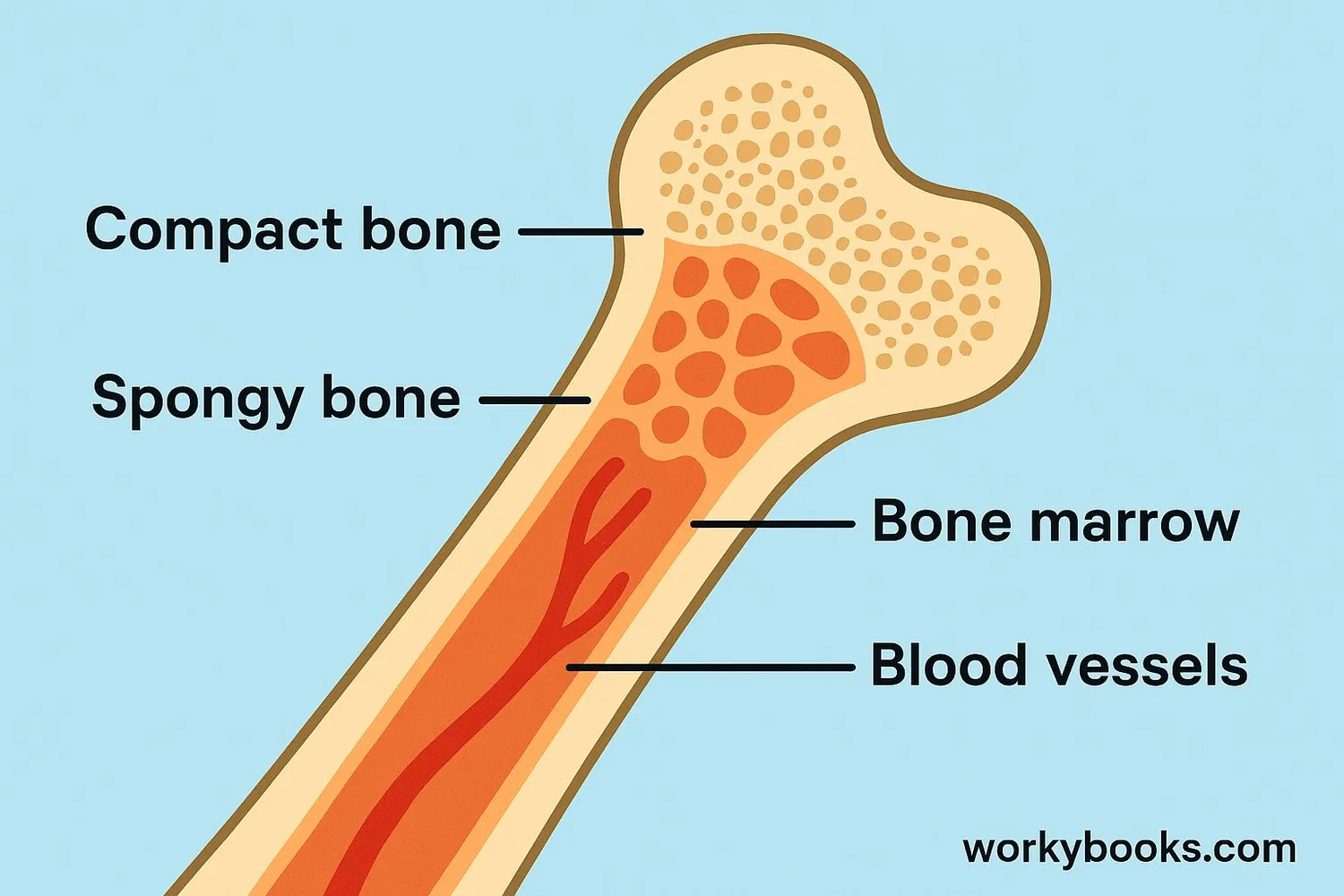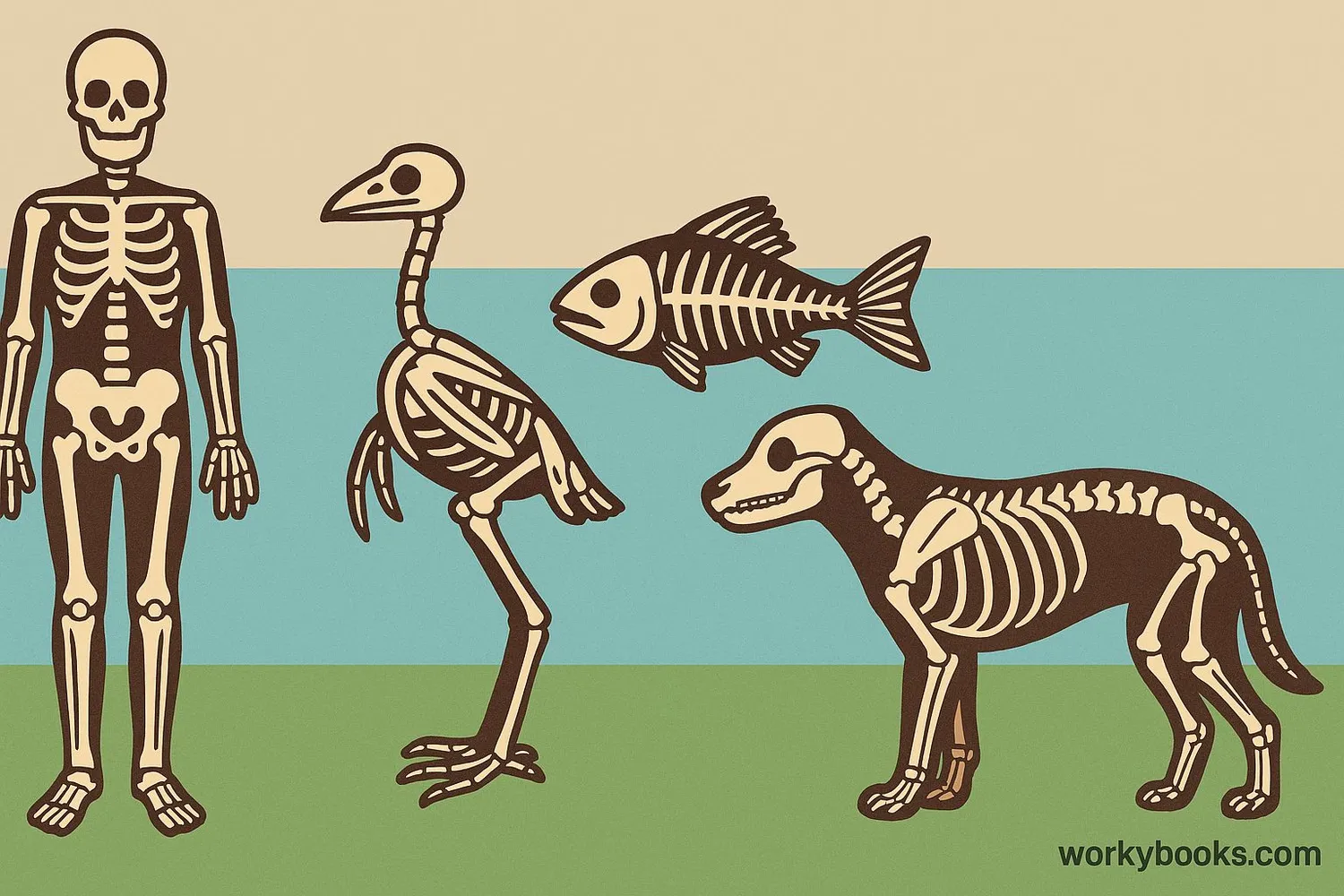Endoskeleton - Definition, Examples, Quiz, FAQ, Trivia
Discover how bones and cartilage create the framework that supports your body
What is an Endoskeleton?

An endoskeleton is an internal skeleton that provides support and protection for an animal's body. Unlike exoskeletons that are on the outside (like those of insects), endoskeletons grow inside the body.
Your endoskeleton is made mostly of bone and cartilage. It includes your skull, spinal column, rib cage, and all the bones in your arms and legs. Vertebrate animals like humans, dogs, birds, and fish all have endoskeletons.
Did You Know?
Humans are born with about 300 bones, but as we grow, some bones fuse together. Adults have 206 bones!
How the Endoskeleton Works

The endoskeleton works through a combination of strong bones and flexible joints. Here's how this amazing support system functions:
Support
Bones provide a strong framework that supports your body against gravity
Protection
Bones like the skull and rib cage protect delicate organs
Movement
Bones work with muscles to allow movement
Production
Bone marrow produces blood cells
Storage
Bones store minerals like calcium
Your skeletal system is alive and constantly changing. Special cells called osteoblasts build new bone tissue, while osteoclasts break down old bone. This process is called remodeling and helps keep your bones strong.
Bone Strength
Gram for gram, bone is stronger than steel! A matchbox-sized piece of bone can support up to 9 tons of weight.
Why the Endoskeleton is Important

The endoskeleton is one of the key features that allowed vertebrates to become so successful. Here's why it's so important:
Protection
Protects delicate organs like the brain, heart, and lungs
Movement
Provides attachment points for muscles enabling movement
Blood Production
Bone marrow produces red and white blood cells
Without an endoskeleton, vertebrate animals couldn't:
• Grow to large sizes
• Support their body weight on land
• Protect their vital organs from injury
• Make the complex movements needed for hunting or escaping
The endoskeleton allows for continuous growth without the need to molt like animals with exoskeletons. This internal support system has been crucial to the evolutionary success of vertebrates.
Skeleton System Quiz
Test your knowledge about endoskeletons with this quiz! Answer all 5 questions to see how much you've learned.
Frequently Asked Questions
Here are answers to some common questions about endoskeletons:
Interesting Bone Facts
Discover some amazing facts about endoskeletons and bones!
Small but Mighty
The smallest bones in your body are in your ear! The stirrup bone is only 2.5-3.3 mm long but plays a crucial role in hearing.
Flexible Framework
Sharks don't have any bone in their bodies! Their skeletons are made entirely of cartilage, which is lighter and more flexible than bone.
Self-Repair
Bones are one of the few tissues in the body that can regenerate completely without scarring. A broken bone can heal so well that it becomes even stronger at the break site!
Surprisingly Strong
Pound for pound, bone is stronger than steel. A cubic inch of bone can withstand loads of about 19,000 pounds—which is roughly the weight of five pickup trucks!





